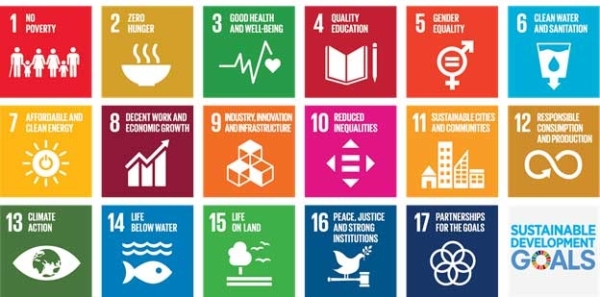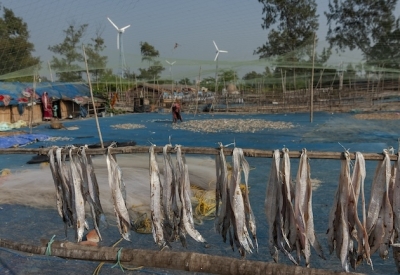UNITED NATIONS, Jun 21 (IPS) — When the 193-member General Assembly adopted the 2030 Agenda for Sustainable Development back in September 2015, it was aimed at transforming the world into an idealistic state of peace and economic prosperity.
But eight years later, most of the world’s low-income countries (LICs) have been struggling to achieve even a single goal, including the two key targets: the eradication of extreme poverty and hunger by 2030.
In a new report released June 21, the United Nations has singled out some of the key achievers—the top five, among the world’s high-income countries (HICs), which are led by Finland, and followed by Sweden, Denmark, Germany and Austria.
European countries continue to lead in the SDG Index – holding the top 10 spots -– and are on track to achieve more targets than any other region, with Denmark, Czechia, Estonia, Latvia, and the Slovak Republic as the top five countries that have achieved or are on track to achieving the largest number of SDG targets this year.
By contrast, Lebanon, Yemen, Papua New Guinea, Venezuela, and Myanmar have the largest number of SDG targets moving in the wrong direction
The findings are listed in the 2023 Sustainable Development Report (SDR) and Index, which ranks the performance of all 193 UN Member States on the Sustainable Development Goals (SDGs) and is produced by the UN Sustainable Development Solutions Network (SDSN).
There is a risk that the gap in SDG outcomes between HICs and the LICs will be larger in 2030 than when the goals were universally agreed upon in 2015, warns the report
- Based on the current pace of progress since 2015, none of the goals will be achieved by 2030, and on average, less than 20% of the SDG targets are on track to be achieved.
- Government effort and commitment to the SDGs is too low, and notably, LICs and LMICs (low middle income countries) obtained a higher average score than HICs on political and institutional leadership for the SDGs.
- Among the G20 countries, average scores range from more than 75 percent in Indonesia to less than 40 percent in the Russian Federation and the United States.
- Argentina, Barbados, Chile, Germany, Jamaica, and Seychelles obtained the highest score on a new pilot index for their efforts to promote multilateralism, yet no country obtains a perfect score.
The report includes the first pilot index of multilateralism that captures the overarching dimensions of support for multilateralism and comparisons of countries, including countries’ efforts to promote and preserve peace, percentage of UN treaties ratified, international solidarity and financing, membership in select UN organizations, and the use of unilateral coercive measures among other indicators.
Argentina, Barbados, Chile, Germany, Jamaica, and Seychelles obtained the highest score for their efforts to promote multilateralism, yet no country obtains a perfect score.
The report was released just ahead of the June 22-23 International Summit for a New Global Financing Pact in Paris hosted by French President Emmanuel Macron.
As the UN nears the mid-point of the SDGs and ahead of the Paris Summit, the report provides timely insights on the chronic shortfalls of SDG financing to developing and emerging economies and offers six priorities for reform of the Global Financial Architecture.
The report also features a new pilot Index that gauges countries’ support for multilateralism and a new Index to track government efforts and commitments to the SDGs.
Despite the grim news, the report demonstrates that while the world is off track at the mid-point of the SDGs, now is the time for countries to double down on SDG progress by endorsing deep reform of the global financial architecture and implementing the SDG Stimulus to close the significant financing gap facing developing and emerging countries.
Professor Jeffrey D. Sachs, President of the SDSN and a lead author of the report, says half way to 2030, the SDGs are seriously off track – with the poor and highly vulnerable countries suffering the most.
“The international community should step up at this month’s Summit for a New Global Financing Pact in Paris, and at the key upcoming multilateral meetings, including the G20 meeting in New Delhi, the SDG Summit New York in September, and COP28 in Dubai, to scale-up international financial flows based on SDG needs”.
“It would be unconscionable for the world to miss this opportunity, especially for the richest countries to evade their responsibilities. The SDGs remain fundamental for the future we want.”
Providing a critical analysis of the new report, Jens Martens, Executive Director of Global Policy Forum Europe, based in Bonn, told IPS the SDSN report brings no surprises.
That the world is not on track to achieve the SDGs was already noted by the Global Sustainable Development Report 2023, the UN Secretary-General’s SDG Midterm Report, and many other civil society Spotlight Reports before.
However, the message that the SDSN Report conveys with the SDG Index is absolutely misleading, he pointed out.
“It suggests that the Western industrialized countries at the top of the ranking are on the right development path. But this is only because it ignores the negative externalities of their consumption and production patterns and their economic and financial policies. For good reasons, SDSN has therefore also developed a Spillover Index, but this merely complements the SDG Index,” he noted.
The emphasis on the SDG Index, with its positive ranking of Western industrialized countries, sends the wrong political message, said Martens.
“To reduce growing global inequalities, governments in the UN must address the structural causes of these inequalities”.
First and foremost, he argued, this requires fundamental reforms in the global financial architecture. The SDG Summit 2023, the Summit of the Future 2024, and the Fourth FfD Conference 2025 provide pivotal opportunities to initiate these reforms, he declared.
Chee Yoke Ling, Executive Director, Third World Network, Malaysia, told IPS the 2030 Sustainable Development Agenda with its 17 SDGs has fallen victim to the failure of means of implementation – new and additional financing as well as appropriate technology transfer to developing countries.
“We see the same fate for the climate and biodiversity treaties”.
At the same time, she said, the barriers in the external environment have worsened. “So, we see alarming debt burdens because the international financial architecture remains stacked against developing countries, while public funds and governments are pushed to take on a “de-risking” role to shore up private creditors”.
Look beyond, she said, the buzz of the World Bank’s Evolutionary Roadmap and the Macron New Global Financing Pact and “we see a fundamentally similar and even stronger set of policies and measures to maintain the status quo and further subject countries to financing sources beyond public control.
Meanwhile middle-income countries and even LDCs are faced with private creditors who refuse to do their part in debt reduction, and G7 governments do not want to rein them in either.
Trade protectionism is also rearing its head. The roll-out of the EU’s carbon border adjustment mechanism has raised alarms. In the name of a green transition for Europe, this new carbon border tax CBAM will directly impact Sub-Saharan Africa that relies heavily on exports of fossil fuels, minerals and metals that are carbon intensive, she pointed out.
Studies show that African countries will be highly exposed to the CBAM since 26% of continental trade was with the EU, while only 2.2% of the EU’s trade was with Africa.
The CBAM could reduce Africa to EU exports by up to 5.7%, based on current carbon prices. This may have the effect of reducing Africa’s GDP by about $16 billion at 2021 levels.
“Without clean technologies being shared with Africa, the EU’s new tax penalizes those countries that are already under increasing debt burden”.
IPS UN Bureau Report






